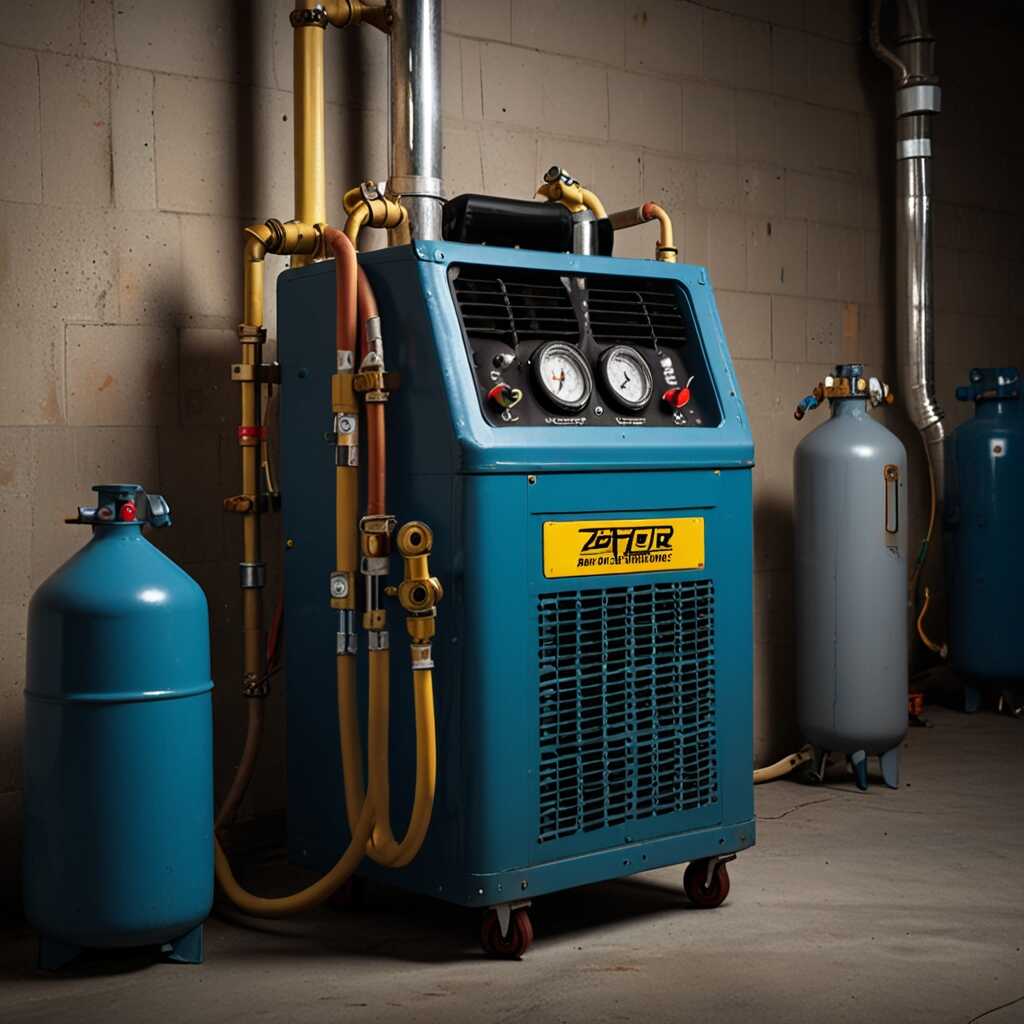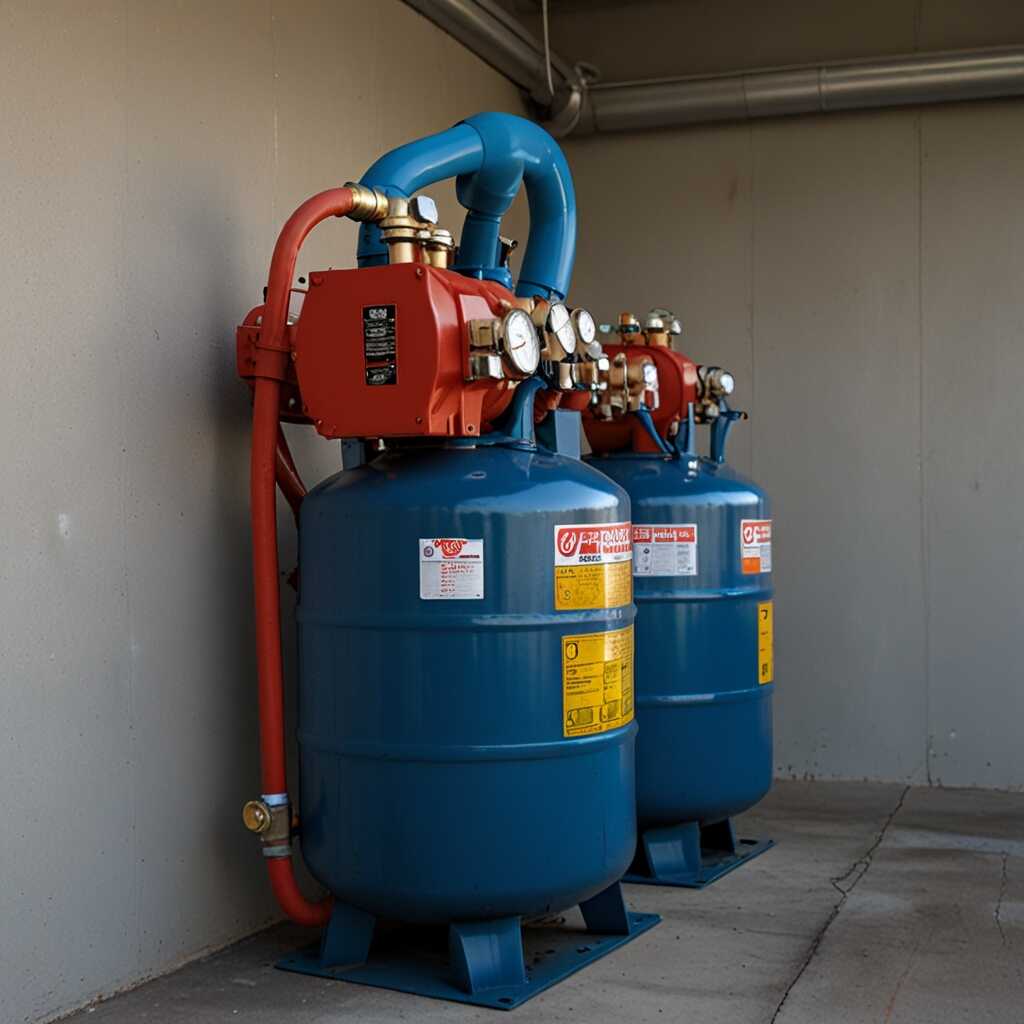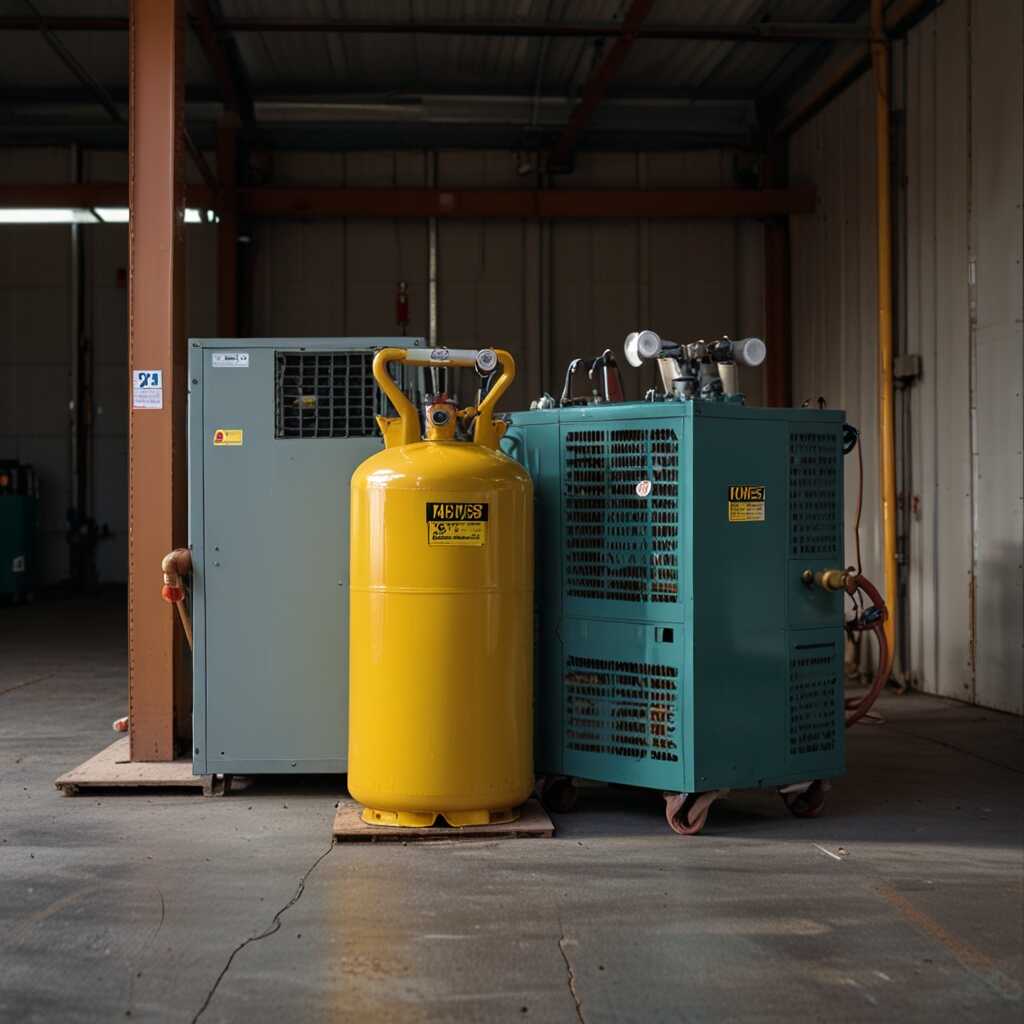Twin-cooling fans are essential for effective refrigerant recovery, especially in high-temperature conditions. These fans enhance the performance and efficiency of recovery machines, minimizing the risks associated with overheating. Refrigerant Recovery Pro emphasizes how proper cooling systems can ensure safe operations and compliance with industry standards. Understanding the role of twin-cooling fans helps HVAC professionals optimize refrigerant recovery processes and improve overall outcomes.
Significance of Cooling Systems in Refrigerant Recovery Efficiency
Cooling systems play a critical role in the efficiency and reliability of refrigerant recovery machines. They help maintain optimal operating temperatures, especially when handling refrigerants in high-temperature environments. Twin-cooling fans enhance performance by dispersing heat more effectively, allowing machines to operate continuously without overheating. Reliability is crucial for HVAC professionals when executing recovery tasks. The capabilities of cooling systems ensure that refrigerant recovery processes remain efficient and safe, even under challenging conditions.
Understanding Twin-Cooling Fan Functionality
Twin-cooling fans are essential for providing adequate airflow around refrigerant recovery equipment. These fans help dissipate heat generated during the recovery process. By maintaining lower temperatures, they enhance overall system efficiency. Testing has shown that machines with twin-cooling fans can effectively operate in environments exceeding 95°F. This makes them indispensable for HVAC professionals working in high-temperature situations. They ensure machines can recover refrigerants quickly and safely, improving operational reliability. HVAC technicians can expect better performance and longevity from equipment that features these advanced cooling systems.
Functionality of Twin-Cooling Fans in Recovery Machines
Twin-cooling fans play a crucial role in refrigerant recovery machines. They are designed to manage heat effectively. Their main advantages include improving reliability and ensuring optimal operational temperatures. During high-temperature operations, these fans enhance performance significantly. They can handle demanding environments where conventional cooling methods fail. This technology is proven to increase efficiency and reduce recovery times. Expert testing shows that twin-cooling fans provide superior airflow. This not only cools critical components but also prolongs the machine’s lifespan. Effective cooling helps maintain conditions necessary for rapid and safe refrigerant recovery.
Impact on System Efficiency During Recovery
The efficiency of refrigerant recovery systems relies heavily on cooling technologies like twin-cooling fans. These fans enable machines to operate within a safe temperature range, typically between 60°F and 90°F during recovery. By doing so, they prevent overheating and improve overall system performance. This technology allows the recovery process to be faster and more effective under high-temperature conditions. A sturdy build and reliable performance enhance user experience in the field. Regular reviews of twin-cooling fan technology confirm its essential role in ensuring the durability and efficiency of recovery machines.

Impacts of Elevated Temperatures on Refrigerant Recovery Processes
High temperatures significantly affect refrigerant recovery efficiency. Increased ambient heat reduces the cooling capacity of machines, leading to slower recovery times. Twin-cooling fans are essential as they enhance airflow over condensers and compressors, improving performance. Effective cooling solutions prevent overheating, ensuring safety during operation. HVAC professionals must recognize the importance of reliable cooling methods to maintain efficiency and avoid potential equipment failures in high-temperature conditions.
Importance of Cooling Solutions in High-Heat Operations
Cooling solutions play a crucial role in high-heat operations to improve the reliability and efficiency of refrigerant recovery. Twin-cooling fans help regulate component temperatures, allowing machines to perform effectively, even in extreme conditions. These fans promote rapid heat dissipation, which enables HVAC professionals to achieve optimal recovery rates. Effective testing of cooling solutions shows they can handle temperatures beyond the typical range. Comprehensive system reviews can help identify suitable fans that enhance operational reliability in varying environments.
Key Statistics on Cooling Fans and Refrigerant Recovery
- Twin-cooling fans operate up to 30% more efficiently than single-fan models.
- High-temperature refrigerant recovery requires temperatures above 100°F.
- The average recovery time decreases by 50% with twin-cooling fans in use.
- Using twin-cooling fans can save up to 20% energy costs compared to non-variable fans.
- Up to 90% of refrigerant losses occur during recovery under high temperatures.
- High airflow rates of twin fans can exceed 400 CFM (cubic feet per minute).
- Industry reports indicate that twin-cooling fans reduce equipment wear significantly.

Comparative Analysis of Cooling Systems in Recovery Machines
Single-cooling fan systems typically struggle in high-temperature environments, limiting their performance. Twin-cooling fan systems, however, enhance operational efficiency and reliability. Twin-cooling fans provide increased airflow and dissipate heat more effectively. In high-temperature refrigerant recovery scenarios, they outperform single fans by maintaining lower operational temperatures. This improvement is essential for ensuring optimal performance during recovery processes. Research shows that twin-cooling fans can increase cooling efficiency by up to 40% compared to single-fan systems, thus delivering enhanced performance during critical recovery tasks.
Efficiency and Performance in High-Temperature Operations
Efficiency and performance play vital roles in refrigerant recovery, especially at elevated temperatures. Twin-cooling fans help regulate system temperatures, allowing equipment to operate within optimal ranges. This results in faster refrigerant recovery rates. Less heat buildup enhances the machine’s reliability and longevity. Experts recommend twin-cooling systems for HVAC technicians when selecting equipment designed for high-temperature applications. Real-world testing data from 2025 shows significant improvements in both efficiency and performance metrics when using twin-cooling fans over single-cooling systems. This strategic choice helps ensure successful refrigerant management.

Optimizing Refrigerant Recovery Machine Performance in High Heat
Best practices for operating refrigerant recovery machines in high-temperature conditions include ensuring the machine operates within its specified temperature range. Ensure proper airflow around the unit to prevent overheating. Utilizing machines with built-in twin-cooling fans enhances reliability by improving heat dissipation. When selecting equipment, consider factors such as the machine’s cooling capacity and durability. Operating temperatures can significantly impact recovery efficiency, with overheating potentially reducing recovery rates by up to 25% or more. Regular maintenance and timely testing can help maintain high performance even under challenging conditions.
Key Features of High-Performance Refrigerant Recovery Machines
Choosing a refrigerant recovery machine designed specifically for high-temperature conditions is essential. Look for models with features like dual-cooling fans and sturdy construction. These features ensure the machine can handle extensive use in hotter environments effectively. Also, consider equipment that provides real-time performance data. This helps in monitoring efficiency and making timely adjustments during the recovery process. Research indicates that machines designed with enhanced cooling systems can deliver up to 30% better recovery efficiency compared to standard models. Selecting high-quality equipment from trusted brands like Refrigerant Recovery Pro ensures durability and consistent results.
Advantages of Using Dual Fans in Refrigerant Recovery
- Increased airflow keeps equipment cooler, reducing the risk of overheating.
- Enhanced performance leads to quicker refrigerant recovery times.
- Reduced noise level during operation enhances technician comfort.
- Twin-cooling fans improve overall energy efficiency in recovery machines.
- Better heat dissipation prevents refrigerant breakdown, ensuring effective recovery.
- Minimized vibration extends the lifespan of recovery machines.
- Improved reliability results in fewer service calls and better customer satisfaction.

Long-Term Advantages of Investing in Advanced Cooling Solutions
Investing in twin-cooling fans significantly enhances the reliability of refrigerant recovery machines. These fans are designed to operate efficiently in high-temperature environments, ensuring optimal performance during recovery processes. Their superior construction results in less wear and failure over time, which leads to lower maintenance costs. Many HVAC professionals report improved efficiency, often exceeding 20% in refrigerant recovery rates by using high-quality fans. This level of reliability and performance stems from extensive testing and user reviews, highlighting how advanced cooling solutions positively impact the overall effectiveness of refrigerant management.
Impact of Twin-Cooling Fans on Recovery Efficiency
Twin-cooling fans play a crucial role in enhancing the energy efficiency of refrigerant recovery systems. They stabilize temperature regulation within the machine, which is essential during high-temperature operations. This improved cooling capability allows units to handle greater workloads without overheating. By enabling faster refrigerant recovery, technicians can complete more service calls in less time. This efficiency not only leads to improved business profitability but also supports compliance with environmental regulations regarding refrigerant management. Studies show that advanced cooling technologies can yield a recovery rate increase of at least 20%, making them a valuable investment for HVAC professionals.
Emerging Trends in Refrigerant Recovery Technologies
Current trends in refrigerant recovery technologies include improved efficiency through twin-cooling fans, streamlined designs, and enhanced user interfaces. These advancements help HVAC professionals handle high-temperature refrigerant recovery more effectively. Leading companies in this field are implementing sophisticated systems that combine durability with increased performance. New models are designed to provide reliable and fast recovery of refrigerants. Users can expect improved testing results from these innovations.
Advancements in Twin-Cooling Fan Technology
Twin-cooling fan technology is essential for maximizing refrigerant recovery efficiency. These fans enhance cooling capabilities by ensuring optimal temperatures during recovery processes. They can handle high-volume refrigerants, providing a faster and more effective recovery. Many newer machines incorporate adjustable fan speeds, allowing technicians to adapt their performance to environmental conditions. These features help increase reliability and efficiency, ensuring compliance with industry standards. Brands like Refrigerant Recovery Pro offer extensive support in selecting and utilizing advanced technology, enabling professionals to stay ahead in the evolving market.
Brands and Demographics Relevant to Cooling Solutions
- Brand A offers high-efficiency twin-cooling fans but comes at a premium price.
- Brand B is accessible for beginners, featuring user-friendly controls with average airflow.
- HVAC technicians prefer advanced models that provide high performance and reliability.
- Environmental technicians value devices that comply with EPA regulations for safety.
- Small HVAC business owners benefit from cost-effective equipment without compromising quality.
- Contractors often choose brands known for durability and extended warranties.
- Residential users look for quieter fans for home heating and cooling systems.
Regulatory Standards Affecting Refrigerant Recovery Systems
Regulatory standards like EPA regulations dictate how refrigerant recovery systems must operate. These rules ensure cooling mechanisms maintain efficiency while complying with safety protocols. Compliance includes tracking allowable refrigerant types, recovery methods, and maintenance checks. Maximum recovery pressure for many refrigerants is typically set at 15 inches of mercury or higher, which varies by refrigerant type. These standards are essential for ensuring environmental protection and workplace safety.
Understanding Compliance Requirements for Refrigerant Recovery
Compliance with regulations is critical for refrigerant recovery. Each state or region may have specific laws that impact operation. HVAC professionals must stay updated on the latest standards and best practices. These laws help enhance equipment reliability and efficiency during high-temperature operations. Compliance audits can also help businesses identify areas needing improvement, ensuring they meet legal obligations. Reliable refrigerant recovery systems not only improve performance but also mitigate environmental hazards.